1/I’ve talked about a few Qur’an manuscripts from the Cairo #Genizah before, but here’s a thread to bring together most of what we know on the phenomenon. Because it’s a little weird to find #Quran fragments kept in a synagogue for 800ish years. All images from @theUL. 

2/Quick refresher: the “Cairo Genizah” is a corpus of 300k+ manuscript fragments primarily from the “genizah” chamber of the Ben Ezra Synagogue in Old Cairo. Cairene Jews deposited old MSS there between ~1100 and 1897. @GenizaLab and can tell you more. lib.cam.ac.uk/collections/de…

3/Genizah fragments are now held in archives around the world. Most of them are what we might expect: texts written by or for Jews, mostly in Hebrew and other Jewish languages. A few though - about 35 that we know of - are from Arabic Qur’an manuscripts. 

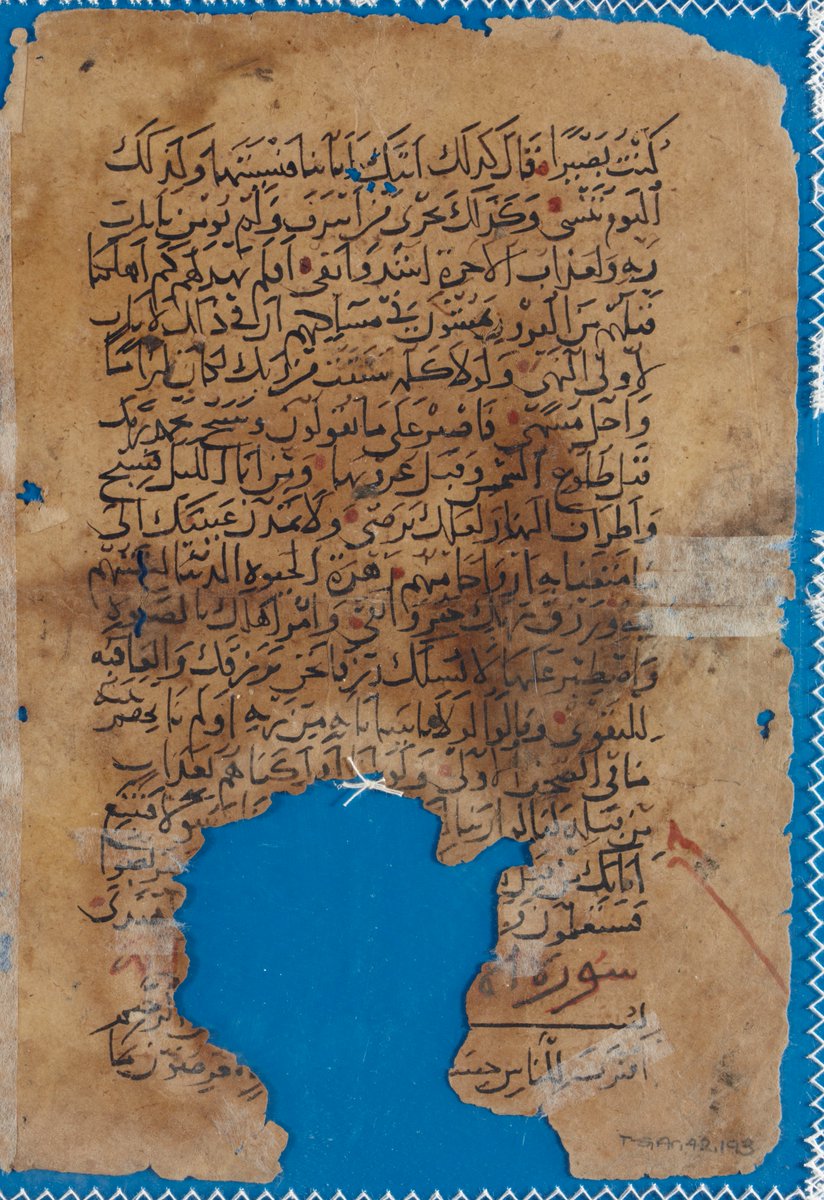
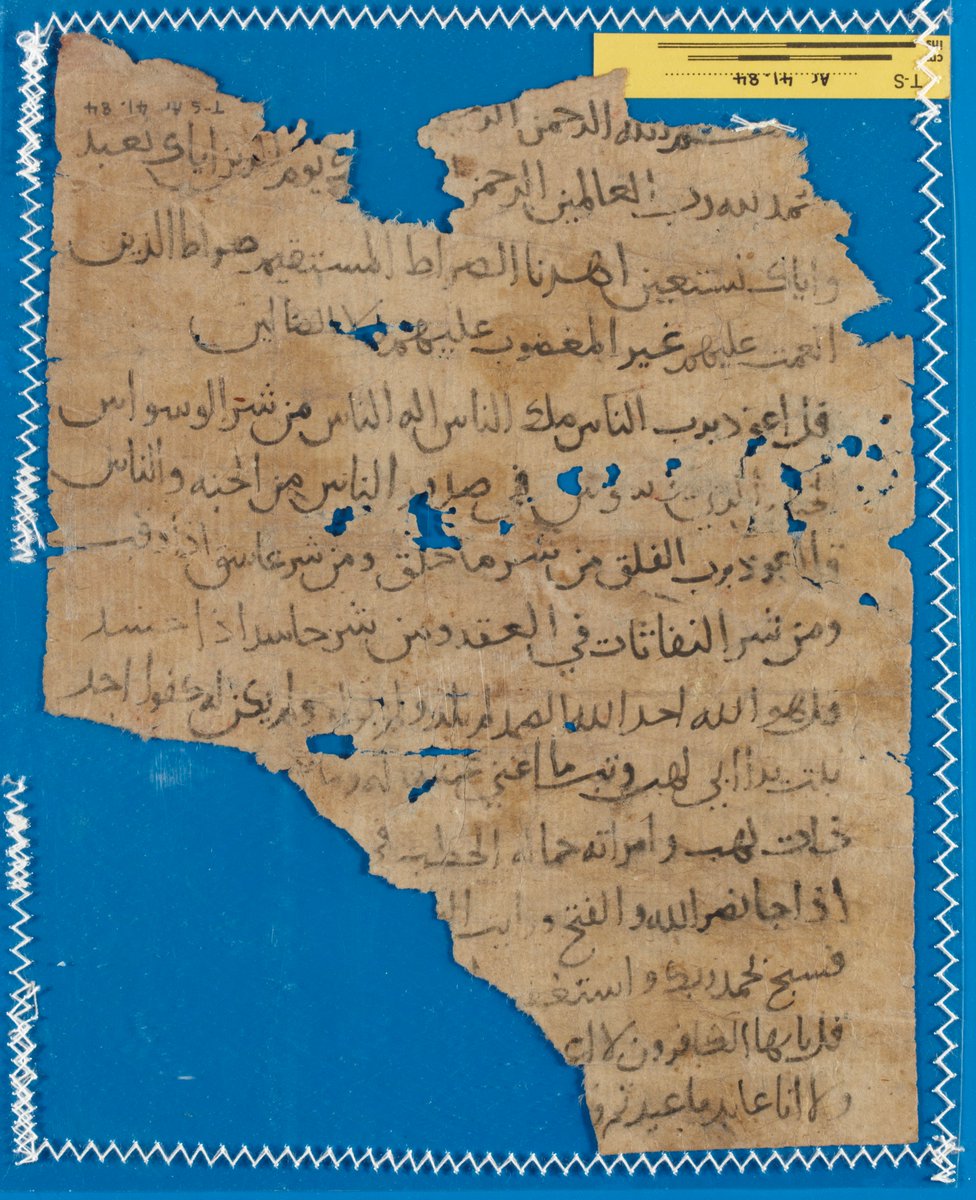
4/These fragments come from 25 separate manuscripts, overwhelmingly small “personal-use” texts. Some are only a few inches wide. These are not the large model codices typically cited in Islamic codicology. For example, relative size compared to 5 euro note: 
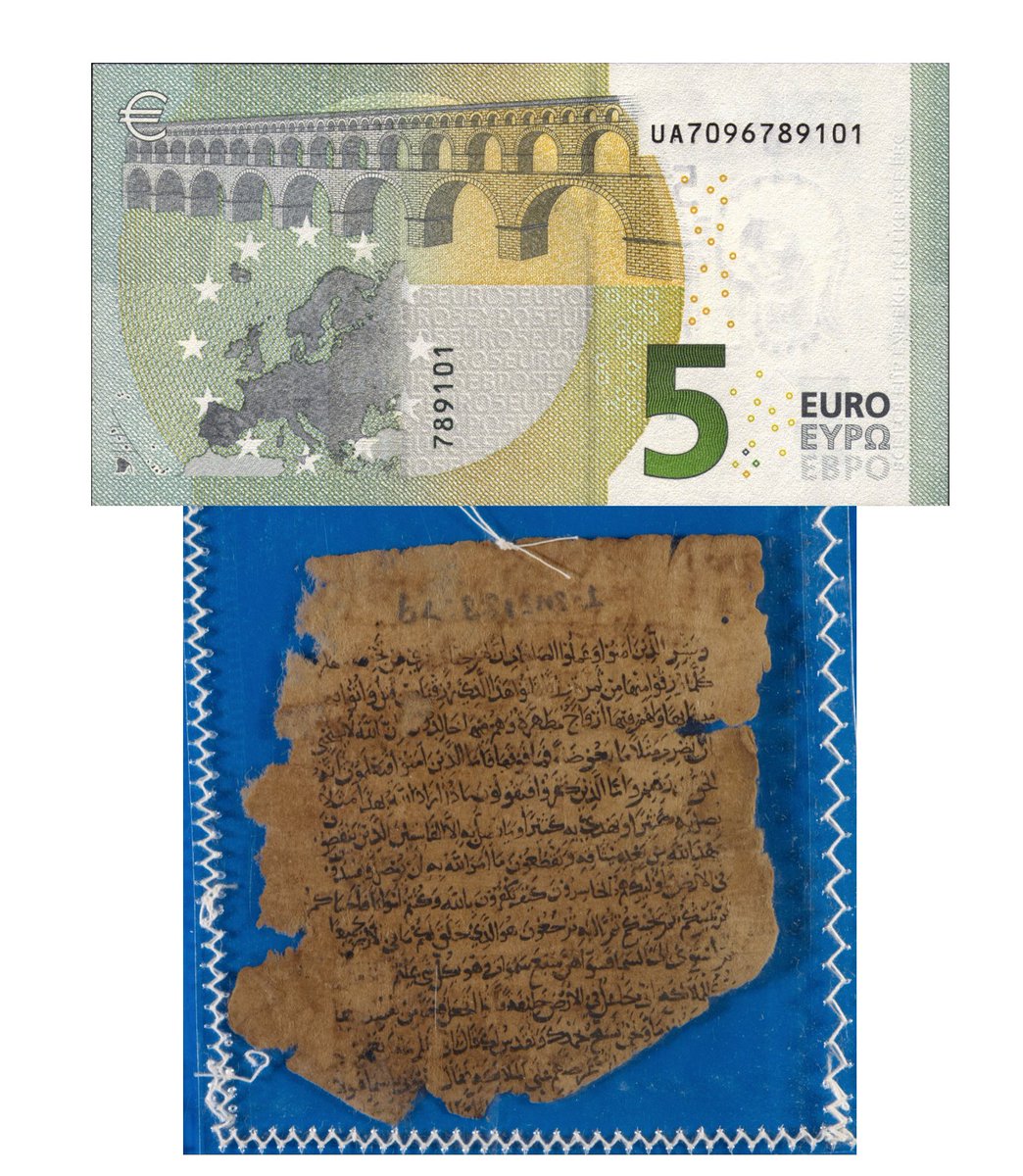
5/Earlier cataloguers identified many of them as Q fragments, but a few slipped through the cracks. These 2 were previously described, respectively, as “Muslim text” and “Religious/philosophical work.” They’re both Qur’an (1st ID by me, 2nd by my co-author Magdalen M. Connolly) 


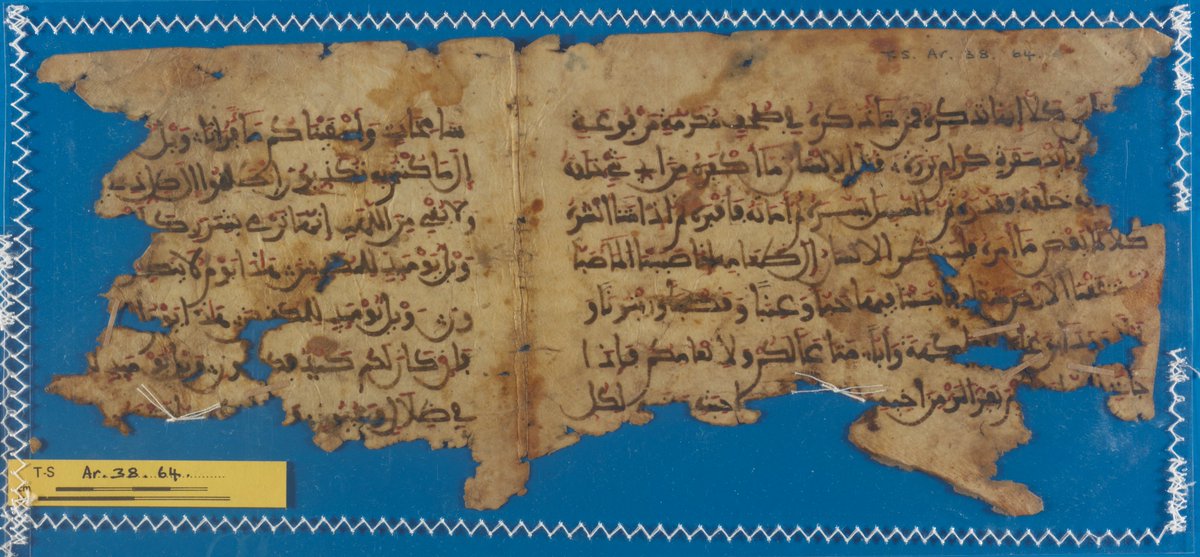
6/Others were never catalogued at all. Dr. Connolly and I discovered 6 more uncatalogued MSS in the Cambridge Genizah collection. There are probably more. 



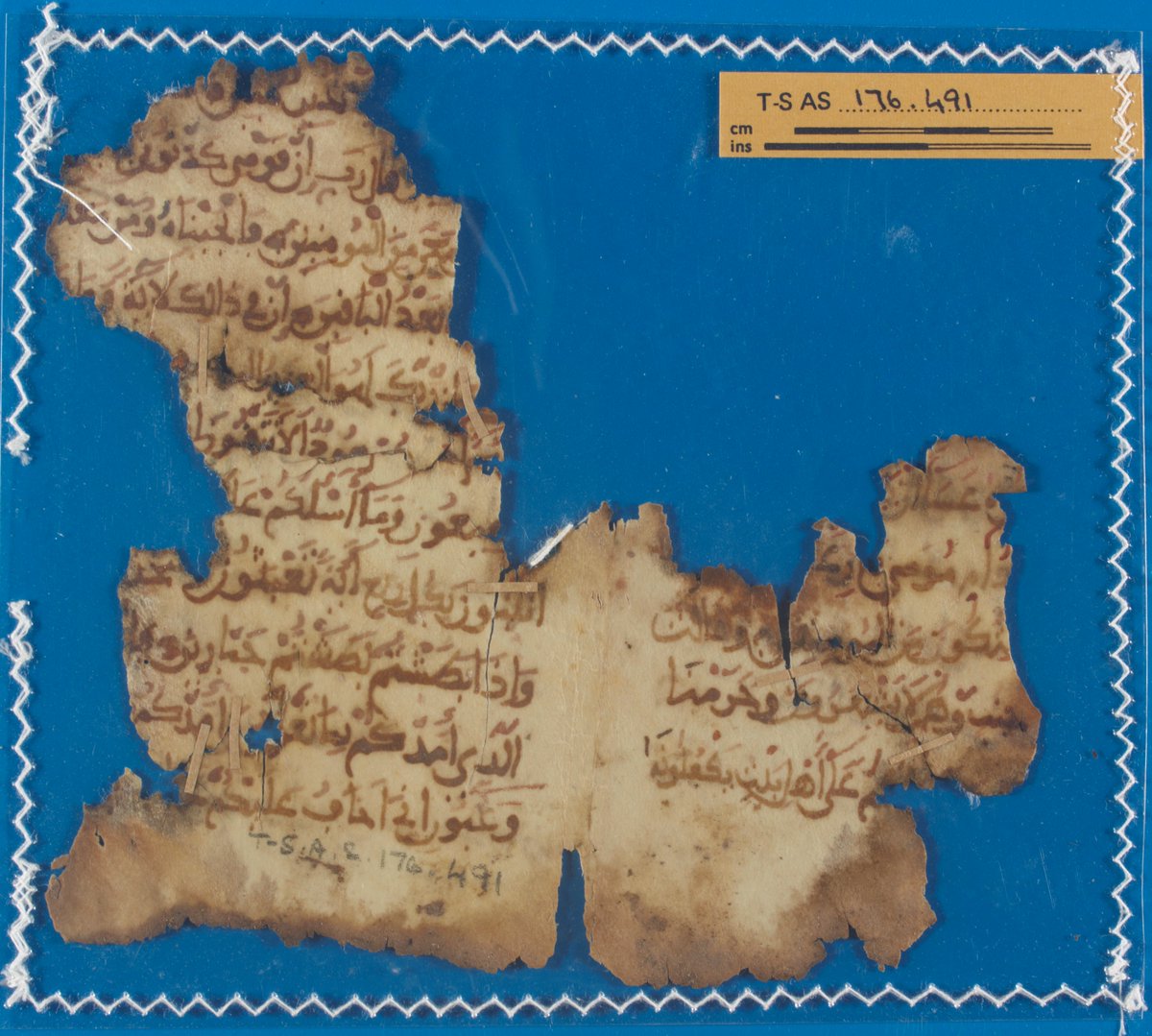



7/There are reasons these weren’t ID’d earlier. The main one is that 100+ years of Genizah scholars mainly specialized in Judaic studies, so a lot of Islamic material has been overlooked. Some researchers (@mrustow @ApcgErc) have worked hard to change this.
8/These Q fragments span the entire Genizah period. The earliest were copied in the 9th or 10th century CE. The latest is from after 1870. This suggests that Cairo’s Jews had access to Qur’anic material for most of that time. 

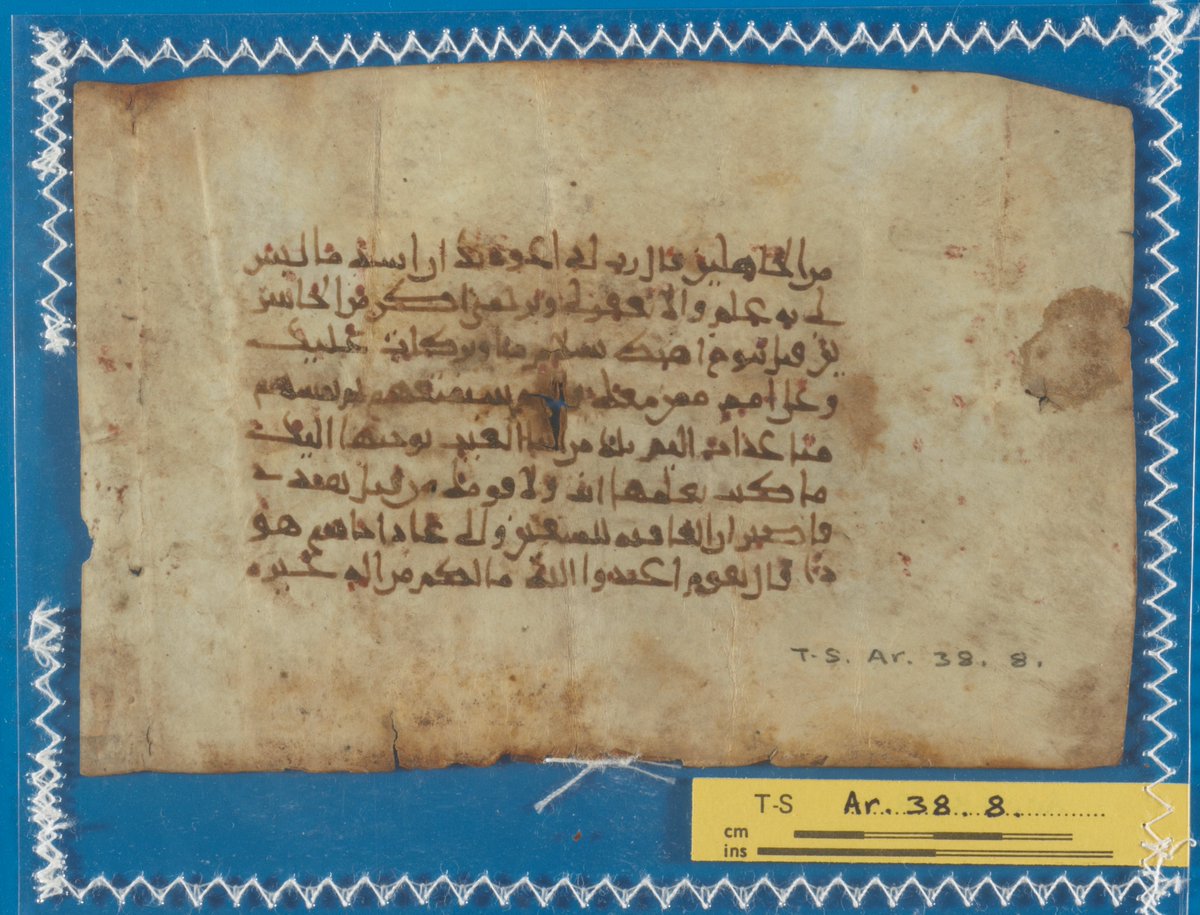

9/Practically, only Jews could have deposited MSS in the Ben Ezra genizah chamber. It’s possible a few Q fragments were sold directly to 19th-century collectors (@RJWJefferson is the expert there ), but we think most made it into Jewish genizot.bloomsbury.com/uk/cairo-geniz…
10/So what were Egyptian Jews doing with Qur’an manuscripts? We think there were 4 main reasons. First, they may have studied them, either to help them argue against Islam or to imitate their codicological layout (this may explain Karaite Heb. Bibles in Arabic script, seen here) 

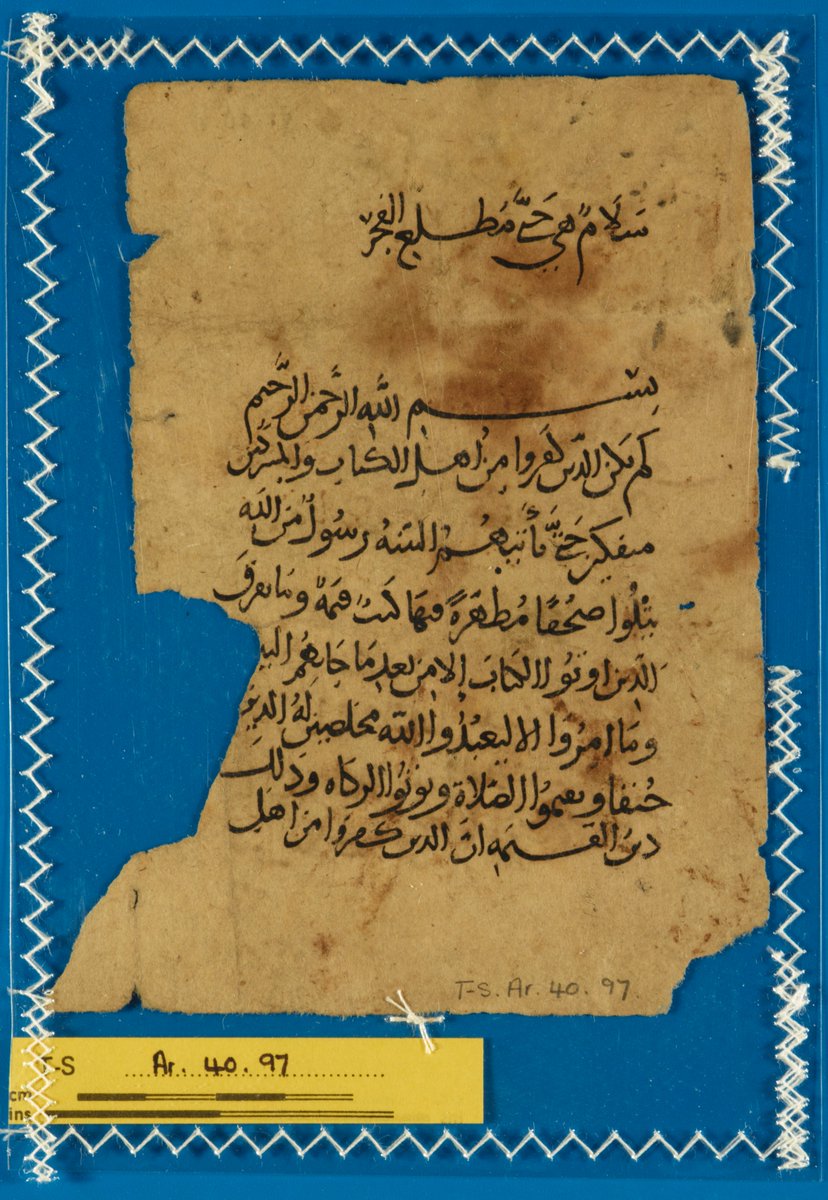

11/Second, some fragments were used as bookbinding material, either to reinforce spines or as layers of pasteboards. We can detect this by clues like close-set rows of sewing holes and deliberately angled cuts. Jews could have purchased books made this way by Muslim bookbinders. 





12/Third, Muslims used some Qur’anic passages in protective amulets. It seems some Genizah fragments were used for the same purpose. This leaf has been extracted from a codex and rolled up (notice the regular folds), I suspect to fit into an amulet case. 



13/Finally, a few Genizah fragments are Qur’anic writing exercises. The 1st one here looks like the expert writing of a teacher roughly imitated by a learner. The 2nd has a colophon linking it to a Cairene public school. 


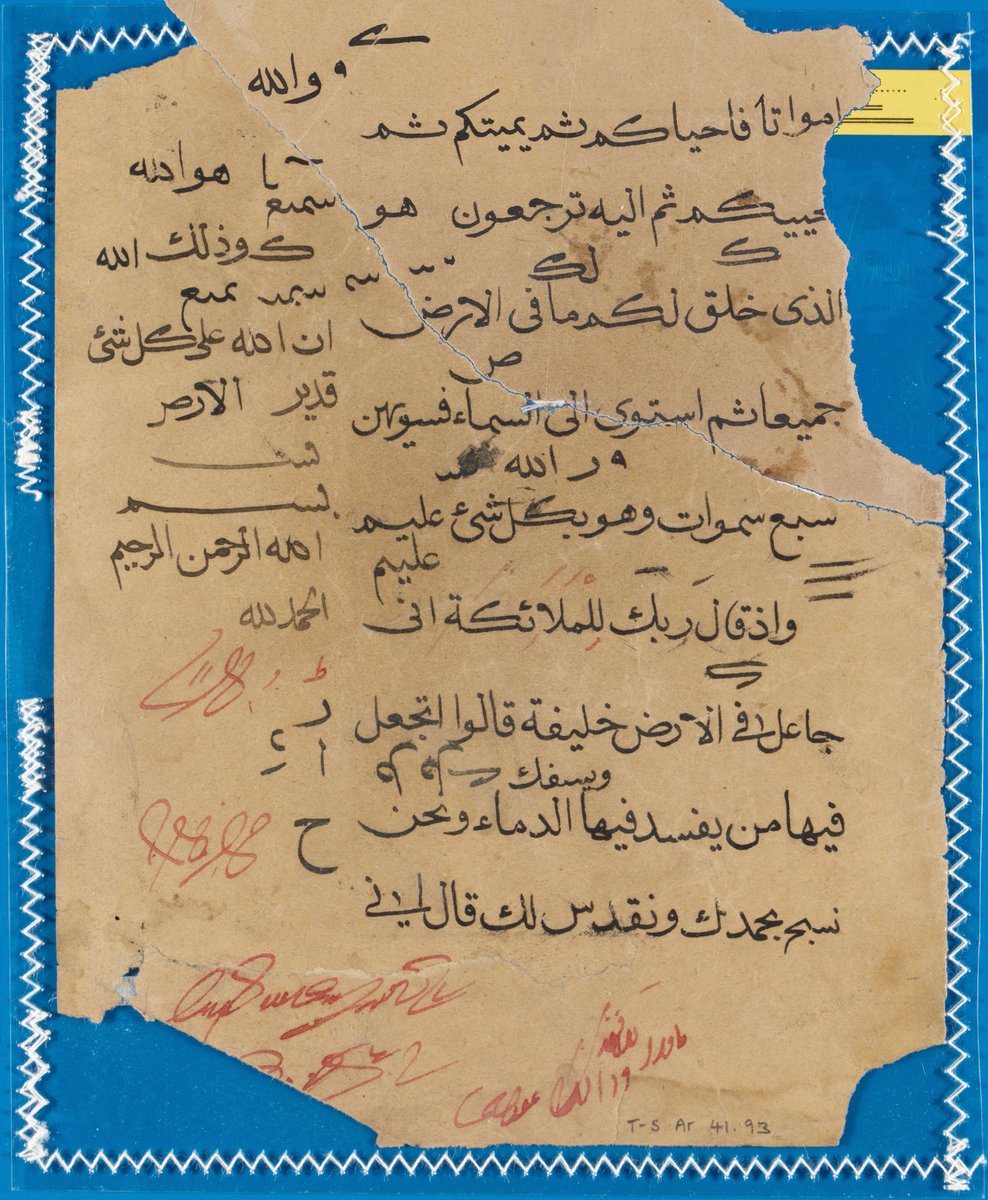
End/This is getting long so that’s gonna be it from me. Worth mentioning that besides @theUL, there are Genizah Q fragments in @TheJohnRylands and JTS. We've written about them all for the Journal of Qur’anic Studies (in #OpenAccess!) here: doi.org/10.3366/jqs.20…
@theUL @TheJohnRylands @threadreaderapp unroll
• • •
Missing some Tweet in this thread? You can try to
force a refresh






















